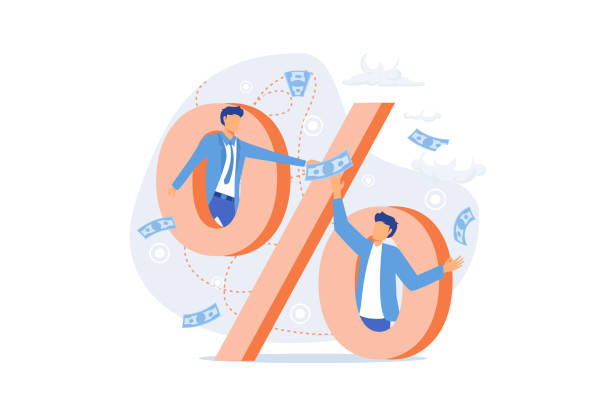The Complete Guide to Margin Trading
Advertisement
Triston Martin
Feb 25, 2024
Margin trading can be a profitable way to invest, but it's important to understand the risks involved. In this guide, we'll break down what margin trading is, how it works, and the pros and cons of using margin. We'll also provide tips for beginner traders who want to start margin trading. So, whether you're new to the world of investing or you're looking for a more advanced strategy, read on for everything you need to know about margin trading.
What is margin trading and how does it work

Margin trading is a type of investing that allows you to borrow funds from a broker in order to increase your purchasing power and profits. The funds you borrow are then used as collateral for the purchase, which can help you reap greater rewards than traditional investing alone. The Complete Guide to Margin Trading will give you an overview of margin trading, including the benefits and risks associated with this investment strategy.
When you use a margin account, you are essentially trading on borrowed money. The funds that you borrow are referred to as “margin” and they allow you to buy securities (stocks, bonds, mutual funds) at a higher value than the amount of cash in your account. The margin is then used to cover any losses that may occur. The amount you borrow will be based on the value of your account’s assets and the lending policies of the broker.
The benefits of margin trading

The complete guide to margin trading will equip you with the knowledge and skills needed to take advantage of margin trading opportunities. The main benefit of utilizing margins is that it allows traders to potentially increase their profit potential as well as diversify their portfolio by investing in different assets simultaneously. The use of margin trading also enables traders to access a wide range of assets, such as stocks, commodities, currencies, and indices, which they would not be able to access with their capital alone.
Additionally, the use of leverage enables traders to open larger positions than they would be able to do without utilizing margins. The use of margins can also be beneficial in the sense that it allows traders to hedge their positions and reduce their risk of potential losses. The ability to access more capital can also allow traders to take greater risks, allowing them to potentially generate larger returns on their investments.
Risks associated with margin trading
When investing in margin trading, it is important to understand the risks involved. The most common risks associated with margin trading are losing more money than you initially deposit, incurring high transaction fees, and facing a potential margin call.
Losing More Money Than You Initially Deposit:
The biggest risk of margin trading is that your investments can quickly become losses if the market moves against you. The leverage provided by margin trading magnifies your potential profits but also increases your potential losses.
High Transaction Fees:
The cost of using margin trading varies from broker to broker. You may incur additional costs in addition to the usual commission and other fees associated with investing such as interest, daily borrowing costs, and margin maintenance fees.
Potential Margin Call:
Lastly, when investing with borrowed money, your position can be liquidated if the value of your account goes below a certain threshold or “maintenance margin”. The broker may also choose to close out some or all of your positions if they consider them too risky. This is known as a margin call.
By understanding the risks associated with margin trading, investors can make better-informed decisions when it comes to investing in this type of market. The Complete Guide to Margin Trading will provide you with an in-depth overview of what margin trading entails and how to use it successfully.
Tips for margin traders
In The Complete Guide to Margin Trading, you will learn some of the key tips and tricks for successful margin trading. The following are just a few of the many tips and strategies in The Complete Guide to Margin Trading:
- Start small and work your way up. The idea behind margin trading is to start with a small amount of money and gradually build your portfolio by adding more capital over time. The key is to diversify your investments across different asset classes, including stocks and bonds, so you can spread out the risk and increase the potential for returns.
- Monitor margin requirements regularly. The typical margin requirement varies from broker to broker and should be monitored closely to ensure you are not exceeding the maximum amount allowable for each trade. The margin requirement should be adjusted as needed, so that you can stay within the predetermined rules of your account.
Examples of successful margin trades
When it comes to margin trading, there are a few key strategies that can help you make the most of your investments. The Complete Guide to Margin Trading will walk you through each step of the process, from assessing risk levels and setting up a margin account to executing successful trades.
FAQs
How do I learn margin trading?
The best way to learn margin trading is by getting a comprehensive understanding of the basics. The Complete Guide to Margin Trading provides an in-depth overview of concepts like leverage, margin calls, and risk management – so you can begin confidently navigating this powerful investment strategy.
What is the benefit of margin trading?
Margin trading allows investors to use leverage – or borrowed money – when making investments. This can magnify potential gains, but also carries increased risk. The Complete Guide to Margin Trading provides helpful information and guidance on how to best manage risk when margin trading.
What is a margin call?
A margin call occurs when the value of an investor's account falls below a certain threshold set by their broker. When this happens, the broker will request that the investor deposit additional funds to bring their account backup to the required level. The Complete Guide to Margin Trading contains a detailed explanation of margin calls, as well as strategies for avoiding them.
Conclusion:
I hope The Complete Guide to Margin Trading has given you a better understanding of what margin trading is and how it works. The key takeaway should be that, when executed correctly, margin trading can help you increase your profits by leveraging the funds in your account but it also carries risks so it’s important to educate yourself before engaging in this form of trading. As with any form of trading, it’s vital to do your research, read up on market conditions and understand the risks associated with margin trading.







